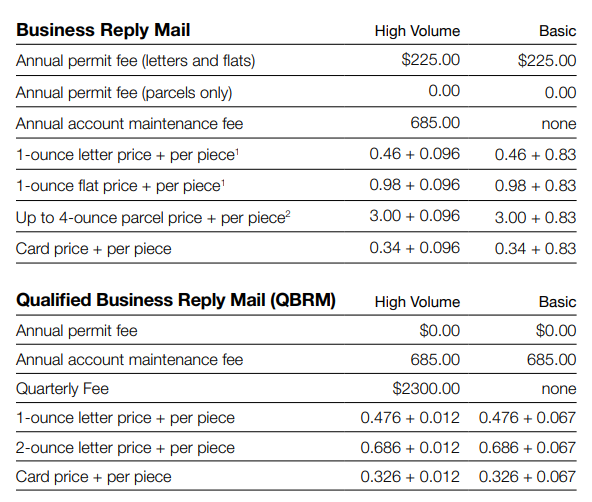This article appeared in the November/December, 2018 issue of Mailing Systems Technology.
You’ve heard that experience is the best teacher, but learning by doing can lead to a mail center that works adequately but is rife with inefficiencies and outdated processes and delivers a bad recipient experience.
The solution, liberal arts professors will be happy to hear, is critical thinking. Beyond asking “what works?”, it is incumbent upon a good manager to ask questions to dig deeper.
The Questions Beneath the Question
To get past “what just works,” you have to start asking the questions beneath that question. Think of it as a more sophisticated – and actually quite useful – variation on some young children’s tendency to ask “Why?” once, then keep asking it about every subsequent answer.
Some examples you can use to interrogate your processes and drive a better, more efficient, and more effective mail center include:
· How could this work better?
· Why does it work, and will it continue to work just as well as our operations evolve into the future?
· How will this task or process be done in one year? Two? Five?
· What problems have my workers encountered with these processes?
· What problems have my customers, recipients, or senders encountered with my work? Where in my processes do these issues occur, and how can I address them?
· What services do my customers and recipients expect from me and my organization?
These are not the only questions you should be asking. But these examples do reflect a curious and critical mindset that can help today’s managers understand and anticipate the challenges their mail centers face — or could face down the line.
A Brief Example
If this sounds like a lot of sitting around and thinking when you could be working, that’s understandable. But let’s look at a common example that drives home the value of this approach: Business Reply Mail (BRM). For many mail center managers, the BRM question is binary: you either use it or you don’t. But did you know there are four levels of BRM, each with its own parameters and pricing? If you didn’t, you might be missing out on improved efficiencies and better margins.
· Basic BRM – This is exactly what it sounds like. It’s the perfect option for mailing operations with lower BRM volumes, although once you get up to more than 930 returned BRM pieces annually, high-volume BRM becomes a more cost-effective choice.
· High-Volume BRM – In many industries, higher volumes open up opportunities for bulk savings. The same is true in BRM. While the pricing formula (below) may seem daunting, know that the cost savings really start to add up once you’re above 930 returned BRM pieces per year. For a more complete picture of your mail center’s potential volume-driven cost savings in BRM, consult with an expert who can show you the ins and outs.
· Basic Qualified Business Reply Mail (QBRM) – QBRM frontloads the costs for cards and one- and two-ounce letters, significantly cutting the per-piece charge, while forgoing the option for parcels up to four ounces, which is available through regular BRM. If your mail qualifies, this becomes a more cost-effective option than basic BRM at return mail volumes of more than 805 annually.
· High-Volume QBRM – QBRM, of course, brings with it its own high-volume option. If your mail center handles more than 614 QBRM-qualified letters and/or 591 QBRM-qualified cards per year, under current pricing models, high-volume QBRM is the cost-conscious way to go. In fact, high-volume QBRM remains the go-to cost-effective option until it achieves rough parity with regular high-volume BRM, at 42,727 pieces or more quarterly, or 170,909 pieces annually.

Source: United States Postal Service Price List.
Do you know which choice is best for your operations? Is that same choice still going to be the right one next month? What about next quarter or next year? By making an audit of your BRM practices part of your monthly budget review, you can uncover opportunities for cost savings and efficiency gains that may have been missed entirely by a manager strictly concerned with “if it’s not broke, don’t fix it.”
One More Thing: Don’t Be Afraid to Ask for Help
Maybe you were already asking all of these questions, or now that you’ve started, you’ve realized you can answer all of them. If that’s the case, congratulations on your perfectly optimized mail center!
What’s more likely, however, is that there is an opportunity for improvement you’re overlooking. It can serve you well to remember that your own operations aren’t the only ones you should be curious about. Look outside of your organization. Explore how others in your position drive efficiencies, such as cutting-edge return mail operations; at consumer expectations, such as mail notifications via email, text message, and other channels; and learn what industry experts see as both the best practices today and the technologies and processes that will help you succeed in the rapidly approaching future.
Don’t be afraid to seek help, whether from peers or third-party consultants, to provide a fresh and knowledgeable perspective. These answers are not always – or even usually – obvious. But exploring the questions, ideally with the help of a knowledgeable partner, can help deepen your understanding of your mail center and prepare it for growth and change.
Are you ready to bring your mail center into its optimized future?
Chris Kula, MBA, CMDSM, CMM, EMCM, MDC, MDP, MPC, is Director, Services Programs - Managed Services Operations at Ricoh USA, Inc. His areas of expertise include mail operations, process improvement, customized project delivery, program management, marketing concepts, integrated marketing initiatives, business development, transportation and logistics, marketing plans, and leadership, mentoring, and in-depth training sessions.
Click here to return to the Quality Control topic page.










